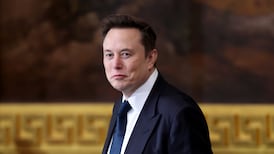The US senate confirmed Janet Yellen as the chairwoman of the Federal Reserve last night, marking the first time that a woman will lead the country's central bank in its 100-year history.
As a Fed official, Ms Yellen (67), has been an influential proponent of the Fed’s extraordinary measures to revive the economy, even though interest rates are already close to zero.
But as chairwoman, Ms Yellen will face the arduous task of overseeing the gradual unwinding of those measures, despite an uncomfortably high unemployment rate of 7 percent and subdued inflation.
During the confirmation process, senators from both sides of the aisle criticised the Fed for not doing enough to aid the economy and help middle-class Americans, and for trying to do too much, thus distorting the markets and risking new bubbles.
“I fear that they are already in way too deep,” said Republican Senator Charles Grassley, on the Senate floor, before the confirmation vote. Mr Grassley questioned how the Fed would pull back on its recent campaign of large-scale asset purchases “without spooking investors,” and whether that might stoke inflation.
Despite those objections, Ms Yellen won confirmation easily. Ms Yellen was approved 56-26, with many senators kept away from the Capitol by inclement weather.
Nearly a dozen Republicans - including Senators Kelly Ayotte of New Hampshire, Saxby Chambliss of Georgia and Tom Coburn of Oklahoma - crossed the aisle in support of Ms Yellen. She will be the first Democratic nominee to run the Fed since President Jimmy Carter named Paul Volcker as chairman in 1979.
Still, Ms Yellen’s was the thinnest margin of Senate approval for a Fed chairman in the central bank’s history.
Ben S. Bernanke, the most recent chairman, was confirmed for a second term with 70 yes votes and 30 no votes in 2010.
As a woman, Ms Yellen will be a rarity among the world’s central bankers, a club dominated by men. “Practically one hundred years to the day from when the Federal Reserve was created, the central bank finally has its first woman president,” said Terry O’Neill, president of the National Organization for Women. “It’s about time.”
Ms Yellen has been a powerful force in the Fed during the deep recession and sluggish recovery. She has argued for the central bank to provide more clarity to market participants and supported its campaign to soak up trillions of dollars of treasury and mortgage-backed debt in order to bring down interest rates and spur investors to start spending.
She has also publicly expressed concern over the problems in the US labour market. In particular, she has focused on the persistent high rate of long-term joblessness - which might scar the unemployed even after they find a job, depressing their earnings and even their children’s earnings down the road.
The employment crisis “has imposed huge burdens on all too many American households and represents a substantial social cost,” Ms Yellen warned in a major speech last year. “If these jobless workers were to become less employable, the natural rate of unemployment might rise,” meaning a higher jobless rate and a less vibrant economy even during good economic times.
Her views have prompted speculation among market participants that Ms Yellen - long considered a contender for the top position at the Fed - might be a stronger proponent for the Fed’s extraordinary policies than Mr Bernanke. But their views have not differed all that much.
In December, Ms Yellen joined Mr Bernanke in supporting the Fed’s decision to start tapering its purchases of Treasury and mortgage-backed debt to a pace of $75 billion a month from $85 billion a month. The decision came as new data showed stronger economic growth and a significant drop in the unemployment rate, to 7 percent in November from 7.8 percent a year before.
The Fed’s decision “to modestly reduce the pace of asset purchases at its December meeting did not indicate any diminution of its commitment to maintain a highly accommodative monetary policy for as long as needed,” Mr Bernanke said in a speech this month, reflecting on his tenure. “It reflected the progress we have made toward our goal of substantial improvement in the labour market outlook.”
The strategic shift will likely dominate the early part of Ms Yellen’s tenure, which is expected to start on February 1st. Fed watchers have warned that withdrawing support from the economy comes with significant risks. Pull back too soon and the economy could face subpar growth; wait too long and the markets could overheat.
“The Fed will need to exercise caution as it scales back further on its pace of asset purchases,” David J. Stockton of the Peter G. Peterson Institute for International Economics said in an analysis of the challenges that lie ahead for Ms Yellen. “We have experienced several episodes in the past few years when a burst of favourable data led to increased optimism that soon proved unwarranted.”
“The Fed could taper purchases now and then ramp them back up should economic results fall short,” he continued. “But reversing course like that would be a difficult manoeuvre to execute and communicate.”
There are already signs that the Fed’s decision to ease up on stimulus has affected lending activity. Interest rates on 30-year mortgages jumped after Mr Bernanke indicated that the Fed might start to reduce its asset purchases last year, although rates remain low by historical standards.
In her confirmation testimony, Ms Yellen stressed that the Fed’s extraordinary measures were bolstering growth, even if the pace of the economy’s expansion had been frustratingly sluggish at times. She also said that the Fed’s policies had helped not only Wall Street, but Main Street.
The bank’s stimulus campaign has “made a meaningful contribution to economic growth,” Ms Yellen said. “The ripple effects go through the economy and bring benefits to, I would say, all Americans.”
New York Times










